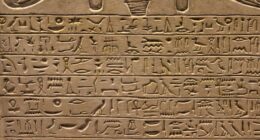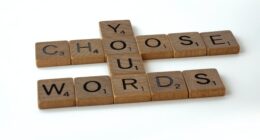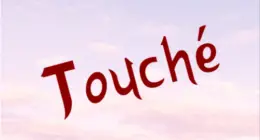Rhyme and rhythm are two of the most basic components of poetry. Rhyme is representing the repetition of similar sounds in two or more words while rhythm is associated with the timing and movement of poetry.
What is rhyme?
Rhyme is the repetition of similar sounds in two or more words. The words may be at the end of a line (end rhyme), in the middle of a line (internal rhyme), or even scattered throughout a line (eye rhyme).
What is rhythm?
Rhythm is the pattern of stressed and unstressed syllables in a line of verse. It is often confused with meter, which is the rhythmical pattern of a line of verse.
The difference between rhyme and rhythm
(Image by Gerd Altmann from Pixabay )

There are a few key differences between rhyme and rhythm. For one, rhyme is created when two words share the same ending sound, while rhythm is created when two or more words share the same stressed syllable. Additionally, rhyme is often used in poetry to create a musical effect, while rhythm is typically found in prose. Finally, while both rhyme and rhythm can create a pleasing effect, they serve different purposes – rhyme is often used to emphasize certain words or ideas, while rhythm is used to create a sense of movement or flow.
How to use rhyme and rhythm in your writing
When it comes to writing, using rhyme and rhythm can help add appeal to your work. Here are some tips on how to use these elements in your writing:
- Rhyme can be used to add a musical quality to your work. When choosing words to rhyme, consider their sound and spelling.
- Rhythm can help create a feeling of movement in your writing. Be aware of the number of syllables in each word and the stresses placed on them.
- You can combine rhyme and rhythm to create a more unified effect. Pay attention to the overall flow of your work and how the words fit together.
What is an example of a rhythm in a poem?
While rhyme is concerned with the similarity of sounds between words, rhythm is the measured flow of words and syllables. It’s the beat behind the poem. An example of rhythm can be found in this extract from Maya Angelou’s ‘Caged Bird’:
The caged bird sings
With a fearful trill
Of things unknown
But longed for still
And his tune is heard
On the distant hill
What is an example of rhyme in a poem?
Rhyme is the similarity of two or more words in sound, especially when they are used at the end of lines in a poem. Rhythm is the measured flow of words and phrases in a text. An example of rhyme in a poem would be if the poet wrote “The rose is red, the violet’s blue” and then ended the next line with “The lily is white, and so is the dew.”
Can you have rhythm without rhyme?
The answer to this question is a little bit complicated. In short, yes, you can have rhythm without rhyme, but it is more common to see the two working together.
Rhythm is the flow of words and syllables in a piece of writing. It is created by the placement of stressed and unstressed syllables in a regular pattern. This pattern can be seen in both poetry and prose.
Rhyme, on the other hand, is when two or more words share the same ending sound. Rhyme is often used to create a musical effect in poems and songs. It can also be used as a tool to help remember information.
While rhythm is the overall flow of a piece of writing, rhyme adds another layer of interest and beauty. The two work together to create something special.
How do you identify rhythm in a sentence?
When you identify rhythm in a sentence, you are looking for the stressed and unstressed syllables that create the cadence of the sentence. The stressed syllables are usually louder and have more emphasis than the unstressed syllables. You can use your ear to identify the rhythm of a sentence, or you can look at the punctuation marks to help you see where the stresses fall.
What are the 3 types of rhythm?
There are three main types of rhythm: Meter, Accent, and Free.
Meter is the most basic type of rhythm and is created by the alternation of stressed and unstressed syllables in a regular pattern. The most common meter in English is iambic pentameter, which consists of five iambic feet (an iamb is a two-syllable unit with the stress on the second syllable).
Accent is a type of rhythm that occurs when certain words or syllables are stressed more than others. This can add emphasis or create a sense of urgency.
Free rhythm is created when there is no set pattern to the stressed and unstressed syllables. This can create a more relaxed or conversational feel.
What are the 3 types of rhyme?
There are three primary types of rhyme: Perfect, Imperfect, and Eye.
Perfect rhyme occurs when the final accented vowel in each word rhymes with the other, as well as any following consonants.
Imperfect rhyme, also called slant or partial rhyme, happens when the accented vowel doesn’t match but the following consonants do.
Eye rhyme is when two words seem to rhyme because they look similar when written but don’t actually sound alike when spoken aloud.
Did Shakespeare use rhyme and rhythm in his poems?
Yes, Shakespeare did use rhyme and rhythm in his poems. In fact, many of his poems are written in iambic pentameter, which is a specific type of poetic meter that uses a specific pattern of stressed and unstressed syllables. This pattern creates a natural rhythm that can be easy to read and recite. Additionally, Shakespeare often used rhyme schemes in his poems to create a musical effect and add interest.
Why do modern poets not use much rhyme?
There are a few reasons why modern poets tend not to use much rhyme in their work. For one, rhyme can be limiting, both in terms of the number of possible rhymes for a given word and in terms of the overall structure of a poem. It can also be seen as old-fashioned or even clichéd.
That said, there are still plenty of poets who do use rhyme, and it can be effectively used when done so deliberately and with care. Ultimately, it’s up to each individual poet to decide whether or not to use rhyme in their work.
What are the 4 characteristics of rhythm?
In music, rhythm is the timing of events on a human scale; it is the measure of the duration of sounds and silences. Rhythm is how we structure time in music. It can be fast or slow, regular or irregular, simple or complex. The four main characteristics of rhythm are:
- Tempo: the speed of the beat.
- Pulse: the underlying regularity of the rhythm, usually presented as a series of equal beats.
- Meter: the grouping of pulses into regular measures, or bars.
- Timbre: the quality or tone of the sound.
How do you mark rhythm in a poem?
In poetry, rhythm is the measured flow of words and phrases. This flow is usually created by the arrangement of stressed and unstressed syllables in a poem. The poet uses rhythm to create a musical or sing-song effect in their poem.
There are many ways to mark rhythm in a poem. One way is to use metrical feet. Metrical feet are units of measurement that determine the number of stressed and unstressed syllables in a line of poetry. Common metrical feet include iambs (two syllables with the stress on the second syllable), trochees (two syllables with the stress on the first syllable), anapests (three syllables with the stress on the third syllable), and dactyls (three syllables with the stress on the first syllable).
Another way to mark rhythm in a poem is by using rhyme. Rhyme is when two or more words share the same end sound. Rhyme can help to create a musical effect in a poem and can also help to emphasize certain words or ideas.
Finally, poets can also use meter to create rhythm in their poems. Meter is similar to metrical feet, but it is used to measure longer sections of poetry, such as stanzas or verses. Meter can be classified by the type of foot used (iambic, trochaic, anapestic, or dactylic) as well as by the number
How do you write a good rhythm?
There’s no one answer to this question since what makes a good rhythm will vary depending on the genre of writing you’re working in and your personal preferences. However, there are a few general tips you can keep in mind to help you create a strong, effective rhythm in your writing.
One key element of creating rhythm is to vary the lengths of your sentences. Using too many short, choppy sentences in a row can make your writing feel stilted and repetitive, while stringing together too many long, complex sentences can make it hard for readers to follow along. Mixing up sentence lengths helps keep readers engaged and creates a more natural flow to your writing.
In addition, pay attention to the number of syllables in each word you use. Varying the number of syllables can also help create rhythm, as well as adding interest and variety to your sentence structure. For example, using shorter words may create a quicker, more energetic pace while longer words can create a slower, more soothing rhythm.
Finally, don’t be afraid to experiment with different rhythms until you find one that feels right for your piece. The best way to get a feel for what works is simply to play around with different options until you find something that sounds good to you.
Frequently asked questions about rhyme and rhythm
What are the benefits of teaching young kids to rhyme?
There are many benefits to teaching young kids to rhyme. For one, it can help them learn to read. Rhyming words are often easier to remember than non-rhyming words, so by teaching kids to rhyme, you can help them build their vocabulary and improve their reading skills. Additionally, rhyming can also help kids with their writing skills. When children are able to identify rhymes, they can use that knowledge to make their own poems and stories more interesting and fun to read. Finally, rhyming can simply be a fun activity for kids! It’s a great way to get them engaged and excited about learning new things.
What is a rhyme scheme?
A rhyme scheme is the pattern of rhymes in a poem. It is usually referred to by using letters to indicate which lines rhyme with each other. For instance, a poem with the rhyme scheme “ABAB” would have lines 1 and 3 rhyming with each other, and lines 2 and 4 rhyming with each other.
What is the most common form of rhythm in poetry?
The most common form of rhythm in poetry is meter. Meter is the regular pattern of stressed and unstressed syllables in a line of verse. The most common meters in English are iambic, trochaic, anapestic, and dactylic.
Does every poem have to have rhythm?
No, every poem does not have to have rhythm. However, many poems do have some sort of rhythm because it can add to the musicality and flow of the poem. If a poem does not have any sort of rhythm, it is usually classified as free verse.
How do you create rhythm?
There are many ways to create rhythm in poetry. One way is to use metrical feet, which are units of stressed and unstressed syllables. Another way is to use repetition, either of words or of sounds. You can also create rhythm by varying the lengths of your lines, or by using enjambment (carrying the sense of one line into the next without a pause).
Why do most nursery rhymes rhyme?
Rhyming is a fun and easy way to create memorable phrases that children can easily remember and recite. Additionally, rhyming helps to create a sing-song quality to the words which can make them more enjoyable for young children to listen to. Lastly, rhyming aids in developing phonemic awareness skills in young children, which is an important early literacy skill.
Is everyone born with rhythm?
Though often used interchangeably, rhyme and rhythm are two separate elements of poetry. Rhythm is the measured flow of words and phrases within a line or poem, while rhyme is the repetition of similar sounds in two or more words. Many poems make use of both rhythm and rhyme to create a musical, sing-song effect that can be pleasing to read aloud.
Featured Image by – Photo by Nick Fewings on Unsplash








